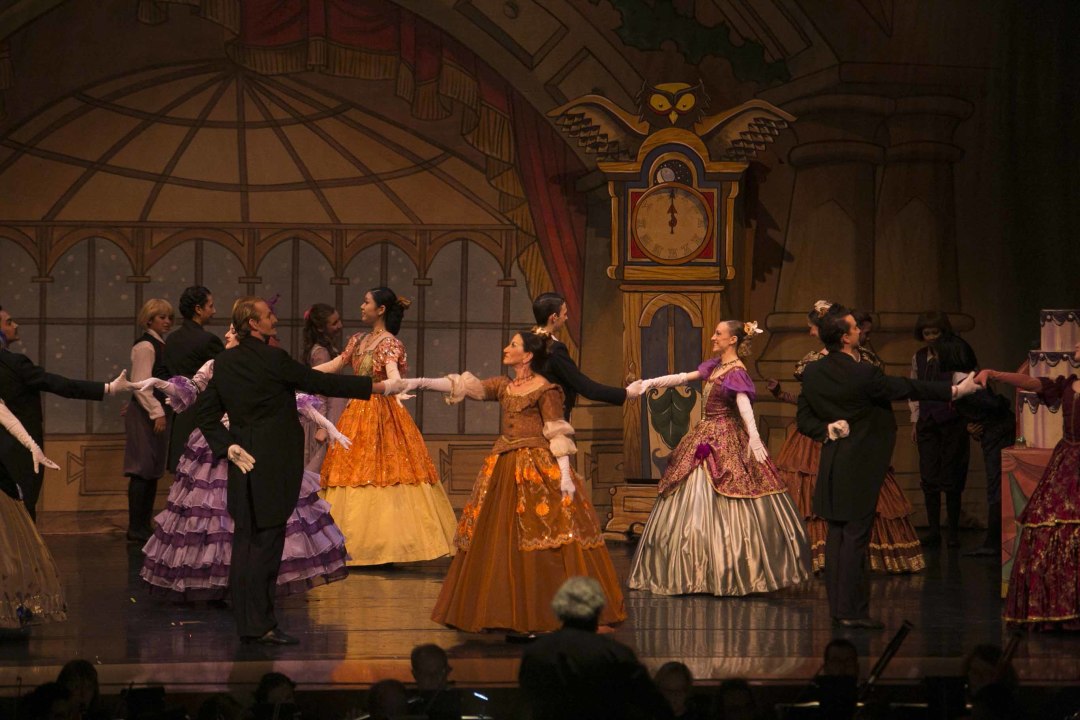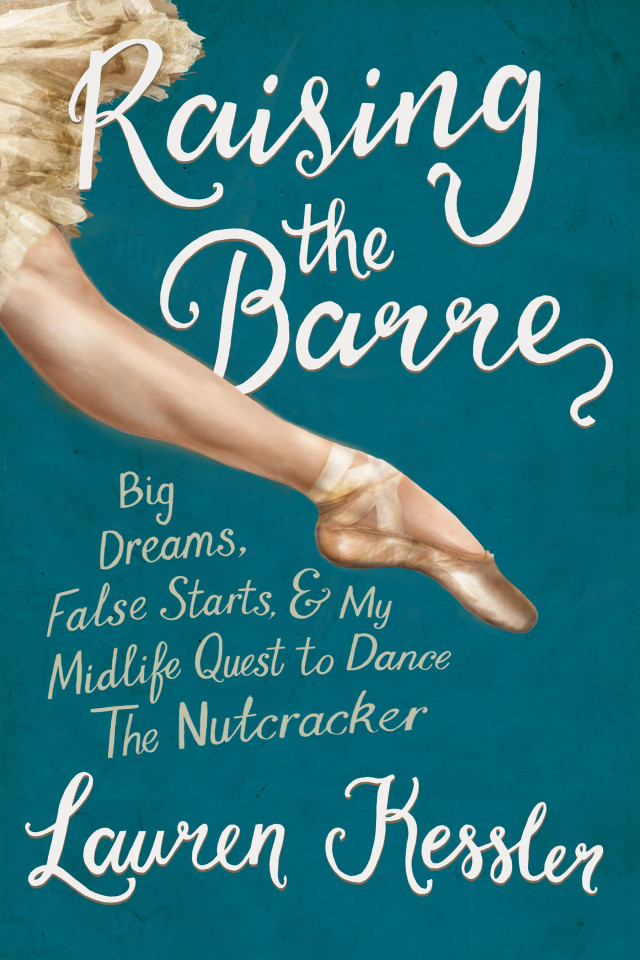What Does It Take to Dance The Nutcracker? This Oregon Writer Can Tell You

Lauren Kessler dancing in the Nutcracker.
Image: Cliff Coles
Lauren Kessler wanted to dance The Nutcracker pretty much all her life. But it wasn’t until she was well into her adulthood—four decades after her last class as a child—that she finally decided to make it happen. She documents this journey in Raising the Barre: Big Dreams, False Starts, & My Midlife Quest to Dance The Nutcracker (DaCapo), which chronicles her intimate relationship with the Nutcracker, ballet itself and her comfort (or discomfort) with her own body throughout.
Beginning with Kessler’s proposition to the Eugene Ballet Company’s artistic director to let her dance in their 2014 performance of The Nutcracker, Raising the Barre takes place over the ballet season and charts Kessler’s physical and mental prep to ready herself for the dance she always dreamed of. This season, Kessler reprises her rose as Aunt Rose for six Nutcracker performances. We caught up with her before the show for some insights from her year of dance.
How did your prep for last year’s The Nutcracker compare to your six performances this season?
Well, I know what I’m doing now (laughs) so I don’t have the same level of anxiety about performance in general. It’s both easier and harder because when I was involved in the world of the Eugene Ballet I was going to ballet classes every morning and I toured with the company, so I was fully immersed in the experience. This season of course I’ve kept up with a lot of the physical parts of remaining flexible. While I did go to Nutcracker rehearsals at EBC I did not tour with them, so it feels different.
How did your first performance of the season in Salem go?
Good! The Elsinore Theater is very interesting and old fashioned, like 1920’s vintage. The front of the house is quite beautiful while the back stage is a bit cramped and the dressing rooms are really cramped. But it went really well, although we didn’t have an orchestra.
How does the experience for you as a dancer change when there is a live orchestra?
It is just a whole other experience. There is a whole other set of performing artists that are right in front of you in the orchestra pit. It becomes this collaborative experience. You don’t look at them and they aren’t looking at you but they are right below you and with more bodies there is more artistic energy. It just feels bigger. The sound hits your ears and fills the stage, it’s really quite invigorating.
Why do you think The Nutcracker has become so synonymous with the holiday season?
It’s the most popular ballet on the planet and I think there are a lot of things going on with that. First of all, thanks to George Balanchine it became a Christmas tradition. It’s one of the things one does in December that’s not shopping at a mall. It is very, very accessible. It is the ballet that people who don’t see ballet see. Its inclusion of little children is charming and also means that any for given community, the little boys and girls who have been studying ballet at their local academies get a chance to dance on stage with real dancers.

Raising the Barre, by Lauren Kessler.
Image: Da Capo
Do you feel like your increased intimacy with The Nutcracker and ballet in general since you began the book has changed your perception of them?
I’ve had an emotional attachment to The Nutcracker, like so many people, because my mother took me from when I was five years old all the way through when I left for college. I started taking my own daughter when she was five. It reminds me of my mother and of mother-daughter relationships.
Now having danced in it, I see the technical aspects of it and how much it takes to make something like this work. Especially when you tour—the costumes, props, lighting, working with children—what a tremendous challenge it is to make the magic on stage. Before that, as an audience member all I saw was the magic of the stage.
Do you feel like knowing it like this has removed some of the magic?
I believe it is more magical for me now than it ever has been. I had not thought of it, but sometimes I think knowing how something works makes it even more astonishing.
Was it a difficult transition for you once the ballet season you had worked so hard for ended?
After I stopped dancing because the ballet was over came the intense period of writing the book. When you’re writing and reconstructing the narrative based on your notes and interviews, you’re living the whole time again. So I actually stayed in that moment for at least another eight months. When I was onstage I didn’t feel like a writer who was pretending to be a dancer so that I could write about it. When you’re in the moment that’s the wonderful part that you can absolutely inhabit.
Do you feel you are in the moment this season?
Absolutely. Right now as I’m talking to you I’m a writer. But I know that in an hour I’m going to go upstairs and put on my false eyelashes and makeup and drive over to the Hult Center and tonight I will be somebody else. I’ll be Aunt Rose for 45 minutes.
Raising the Barre, by Lauren Kessler, is published by Da Capo.
